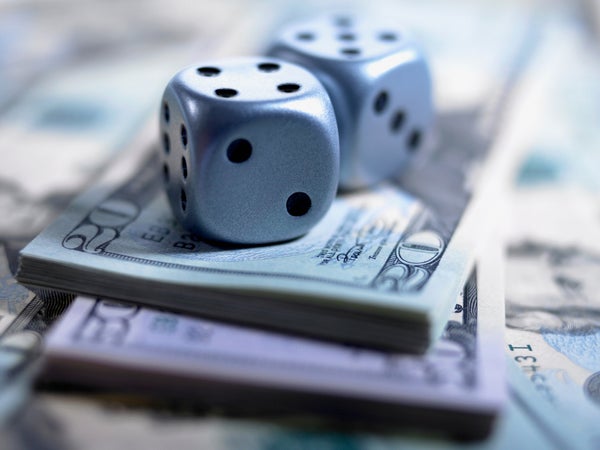Imagine this scenario: a friend offers to flip a coin and give you $20 if it lands on heads. If it lands on tails, you give her $20. Would you take that gamble? For most of us, the amount you could possibly win would need to be at least twice as large as the amount you could lose before you would accept the risk. This tendency reflects loss aversion, or the idea that losses generally have a much larger psychological impact than gains of the same size.
So what causes us to be more sensitive to losses? In 1979 psychologists Amos Tversky and Daniel Kahneman developed a successful behavioral model, called prospect theory, using the principles of loss aversion, to explain how people assess uncertainty. More recently, psychologists and neuroscientists have uncovered how loss aversion may work on a neural level. In 2007 my colleagues and I found that the brain regions that process value and reward may be silenced more when we evaluate a potential loss than they are activated when we assess a similar-sized gain.
In the study, we monitored brain activity while participants decided whether to take a gamble with actual money. We found enhanced activity in the participants' reward circuitry as the amount of the reward increased and decreasing activity in the same circuitry as the potential losses accrued. Perhaps most interesting, the reactions in our subjects' brains were stronger in response to possible losses than to gains—a phenomenon we dubbed neural loss aversion. We also found that individuals displayed varying degrees of sensitivity to loss aversion, and these wide-ranging neural responses predicted differences in their behavior. For instance, people with stronger neural sensitivity to both losses and gains were more risk-averse.
On supporting science journalism
If you're enjoying this article, consider supporting our award-winning journalism by subscribing. By purchasing a subscription you are helping to ensure the future of impactful stories about the discoveries and ideas shaping our world today.
Another theory is that losses may trigger greater activity in brain regions that process emotions, such as the insula and amygdala. Neuroscientists Benedetto De Martino, Ralph Adolphs and Colin Camerer studied two individuals with a rare lesion on their amygdala and found that neither exhibited loss aversion, suggesting that the amygdala plays a key role. A larger 2013 study from Italian neuroscientist Nicola Canessa and his colleagues replicated our initial findings and also discovered that activity in the insula increased as the potential loss mounted. These findings, taken together, most likely help to explain loss aversion, but understanding exactly how these various neural processes play out in different individuals and situations requires further investigation.
Question submitted by Claus Schittenhelm via e-mail
Do you have a question about the brain you would like an expert to answer? Send it to MindEditors@sciam.com
